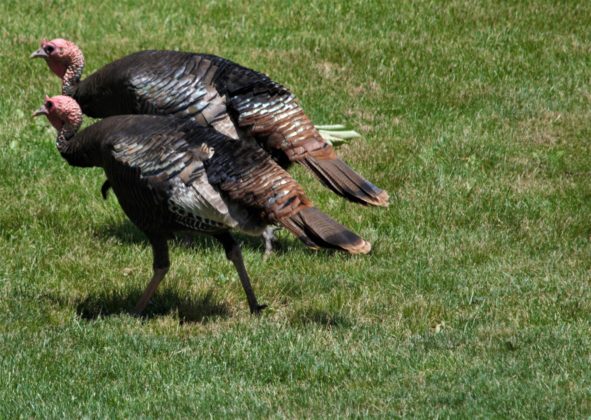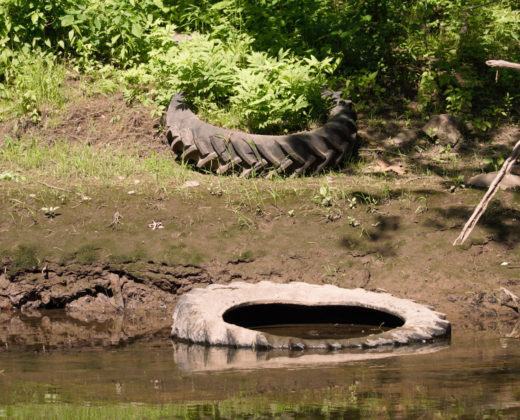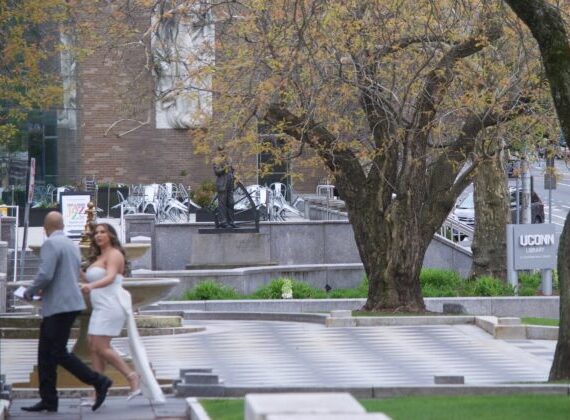Hello! For the next 19 days we will be exploring our streets, backyards, and parks to have fun and earn up to seven (virtual) badges. Come and go as you’d like!
With most large group events canceled this summer and common sense telling us that traveling outside our region is not smart while a pandemic still threatens, we have an opportunity to get more acquainted with what’s within a few miles of our front door.
TODAY: Earn your “Helping Others” badge by practicing Leave No Trace principles
WHAT ARE THESE
Whether you are in nature, walking to the corner store, or protesting in the streets, there are opportunities to travel lightly. Leave No Trace is guidance for protecting our surroundings.
In Nature
1. Plan ahead and prepare: Think about what you are trying to achieve on this outing and what is required. “Achieve” sounds really lofty and important, but there’s a difference between “I want to just wander” and “I want to find a stream five miles away.” If you’re walking five miles, each direction, backwards in the blazing sun, you need more water, snacks, sunscreen, a hat, and a fully charged phone. Bring water, bring water, bring water. Even if you hate drinking water. If you end up not needing it all, water some flowers with it at the end of your outing. Nothing ruins fun quicker than a dehydration headache.
2. Travel and camp on durable surfaces: If there are trails, stick to them. Roaming around Connecticut and found a puddle spanning the full trail? Walk through it, not around. You’re outside to have fun, not to stay prim, proper, and clean. There may be times to step off the trail, but aim to reduce these.
3. Dispose of waste properly: Okay, so this is the place where “proper” makes sense. Cigarette butts, bags of dog poop, latex gloves, masks — those have all accumulated more rapidly on trails in recent months. Yikes! Carry a backpack or camera bag or something to put your trash in and still have your hands free. Maybe keep a plastic or paper bag inside your regular bag to contain any litter that’s sticky, drippy, or slimy.
4. Leave what you find: This can be challenging if you want to take home all the rocks, shells, and plants. I find it helpful to take more photographs of the things I like. This makes it less tempting to fill my bag with rocks. This principle also means to leave things as you found them, so don’t be stacking rocks or carving initials into trees. There are loads of concrete surfaces, like at Heaven Skate Park, that you can decorate with spray paint instead of altering trees and rocks.
5. Minimize Campfire Impacts: A campfire in city limits isn’t the best idea, but maybe you’re venturing beyond and want one? Read the link for thorough advice, but the top two things to do, in my opinion is to watch that fire like a hawk and make sure it’s 100% out before moving on. Check in with CT DEEP to see what the forest fire danger is for the day. Connecticut isn’t at the California-level for wildfire destruction, but let’s not screw up what we have.
6. Respect Wildlife: Give ’em room! If you see pics on this site that look very close up, that’s because I’m using a zoom lens. These are not photographs I could possibly take with my phone without getting up into critters’ faces. For one, nobody needs to get bit or scratched, and two, as cute as they might seem, wild animals should have the freedom to remain wild.
7. Respect other visitors: Give ’em room! Wear a mask/cloth face covering during pandemic times when you can’t put those 1-2 meters of space between yourself and other visitors. Be considerate and move to the side of the trail if you’re stopping in an area where others might need to go by. Don’t be like that person in the grocery store who blocks the entire aisle to respond to messages on her phone.

In Protest
As I write this, I am thinking about the phenomenon of people coming from suburban and exurban areas, into cities to protest. The solidarity is awesome, but it presents a few things to think about.
1. Plan ahead & prepare: Fill your water bottle at home, grab your mask, and check out the route in advance. Marches can be spontaneous. They’re usually not. See if you’ll be walking by businesses open on that day and at that time, and if these are places that will refill water or let you use the bathroom if needed. This is trickier in a pandemic, but you can save yourself misery doing research.
2. Travel on durable surfaces: Respect that community you’re in by staying off people’s lawns unless they’re encouraging you to cut through. One person? Not a huge deal. Hundreds? That’s different. If we’re showing up to demand respect for a community, then we gotta show it to the actual community, right? It can’t just be symbolic action.
3. Dispose of waste properly: We might not have trash and recycling bins where they are always convenient. (Use the 311 app to suggest locations for new barrels) You can put your garbage in your backpack and deal with it later, or look for an easily accessible private trash can/recycling bin that’s on curb or at the end of a driveway. This is controversial with some but I don’t care. Better it there than on the ground. As for the signs, it can be powerful to create a display of them such as what has happened on the White House fence, but that’s intentional. If not doing something like that, take them home with you or find a way to dispose.
4. Leave what you find: Unless your find is someone’s dropped wallet. Then get that back to them.
5. Minimize Campfire Impacts: Okay, this one doesn’t exactly transfer to protests. It’s always good form to ask yourself when entering a community that is not yours if what you’re doing respects that community or harms it.
6. Respect Wildlife: You probably won’t encounter more than squirrels, pigeons, and a few robins during a loud protest, but give them their space.
7. Be Considerate of Other Visitors: Right now this absolutely means providing physical space and wearing masks at rallies and staying home if you are sick, but this takes lots of other forms. Consideration can come from the organizers, especially those who are not from the community in which the rally is planned: Is your route accessible to those with a variety of abilities, and if not, is there at least an endpoint rally near benches and folding chairs? Visit the site beforehand, in person, if this is a planned protest. Have you reached out to any of the residents along the route to see how they feel about this going through their neighborhood? Are you mindful of how your actions reflect on the cause? (To put this more bluntly, if you’re a White person taking part in a #BlackLivesMatter protest, are you acting as an ally or have you made this about you?)
Leave No Trace/Do No Harm means a lot of things, and every day offers a chance to make better choices than we might have made in the past.
For more specific examples and visual advice, check out the Leave No Trace Instagram. There is a free webinar on the topic on June 24 — details here.


Linda Pagani
Also, when hiking on trails:
1. Those hiking uphill have the right-of-way. It seems counterintuitive, but that’s the rule. Those hiking uphill have their momentum going, and potentially less visibility than those going downhill.
2. Keep your dog on a leash. Some dog owners proclaim that their dogs won’t bother you, are so friendly, so harmless, etc., and then they’re jumping on you, with their paws on your shoulders, practically knocking you over on the trail. (It’s happened more than once.)
3. Be bear aware. Know how to safely handle a bear encounter. I carry a loud whistle, and even a small air horn sometimes, depending how deep into the woods I’m going. Also, report the bear sighting to DEEP. For more info, see https://portal.ct.gov/DEEP/Wildlife/Nuisance-Wildlife/Living-with-Black-Bears.
4. Please wear a mask when you pass other walkers along the CT River paved path from the boathouse to Mortensen Plaza. Yes, young people, that means you.
Finally, for those driving through a neighborhood en route to a trail, park, or protest, leave no audio trace. Turn your music down when you’re stopped at a light or stop sign, at the very least. Just because you love the song, doesn’t mean the people living next or close to the light or stop sign do. They are entitled to choose the sounds they want to live with.
Kerri Provost
I didn’t include your first few tips because I’m thinking about people in Hartford proper…so the hills and bears seemed unlikely, but yes. The people exerting the most effort have the right of way 🙂 I think this should apply to everything.
The funny thing about the mask non-wearing is that it’s been on point in my neighborhood, but when I go into Downtown or the West End, there’s really a mix of what people are choosing to do. I’ve lost my shit on older White women who come into the city to work and apparently walk to Dunkin on Capitol Avenue not wearing masks. It’s exceptionally disrespectful of those who live in the neighborhood.
Linda Pagani
I know, I was going to reply to my comment once it was posted that my hiking tips were off point. Sorry, got carried away.
Agree about the non-mask-wearing in downtown. Um, people, it’s only a worldwide pandemic, and a very horrible disease to contract.
Kerri Provost
Oh, it’s hard not to get carried away. I hope people who haven’t really been spending time outdoors get hooked and then need to level up and learn about the more hardcore wilderness safety stuff.
As for mask wearing, on the paths it’s not that hard to just put them on when you know you’re going through a “congested” area and then again when you see people in areas where you can’t make enough space. Wearing a mask says “I understand science. I respect you.” For all those whining about masks, I would just offer that they are far less painful than menstrual cramps, so suck it up!
Linda Pagani
Agree. If you don’t want to wear them outside when no one is near you (and who does, especially in this heat) then at least put it on when you’re walking less than six feet from someone. It’s such a simple thing to do. This is why the pandemic will keep going in the U.S., because of the many people who refuse to comply with the two basic, simple asks from public health experts: the mask wearing, and maintaining six feet of physical distance, even when outside.